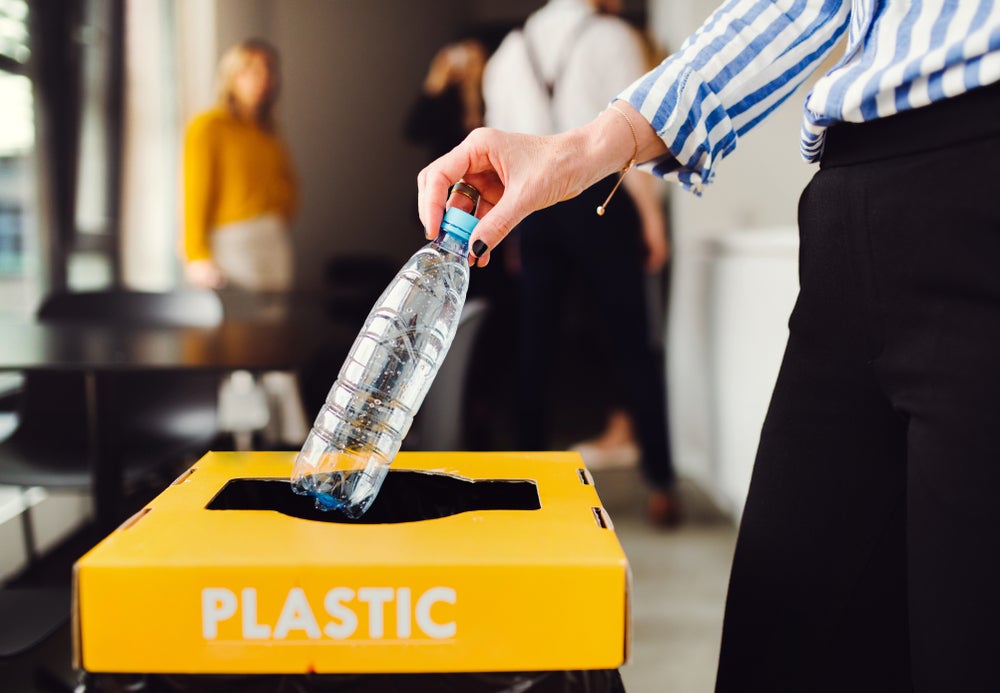
The way society has addressed environmental, social and ethical issues has evolved considerably over the last 20 years. From an early focus on the mitigation of ‘end-of-pipe’ impacts, thinking has now moved on to a more holistic and sustainable approach closely linked to the concept of social responsibility. Understanding the complex systems that determine our effect on the social and natural environment is now seen as critical in meeting the challenges facing society.
For product developers, manufacturers and retailers this evolution has been mirrored by a move from management of single issues such as the environmental impact of packaging waste or material choice, into the arena of whole product impact and sustainable product development.
Entire product lifespans are now considered using what is known as ‘cradle-to-cradle’ thinking.
Boots believes that improving product sustainability should be seen as an opportunity to innovate new products, build brand trust and minimise risk, rather than as a brake on product development. The best way to achieve this is by fully integrating sustainable development into product development from the start of development projects. This way, sustainability becomes a natural part of the process rather than an optional extra.
PRODUCT JOURNEYS
Boots’ strategy on product sustainability involves thinking across the whole product lifecycle, incorporating all aspects of sustainable development. In order to illustrate this in a simple and engaging way they have developed the ‘product journey’ approach. This is employed both internally and externally to increase understanding of the principles.
How well do you really know your competitors?
Access the most comprehensive Company Profiles on the market, powered by GlobalData. Save hours of research. Gain competitive edge.

Thank you!
Your download email will arrive shortly
Not ready to buy yet? Download a free sample
We are confident about the unique quality of our Company Profiles. However, we want you to make the most beneficial decision for your business, so we offer a free sample that you can download by submitting the below form
By GlobalDataAt each stage, all impacts – including elements such as biodiversity, energy, resource use, waste and ethics – are considered. This ensures, for example in the case of chemical policy, that sustainability is applied to the total product, including both ingredients and packaging.’
Running a number of linked projects across a product range enables Boots to drive positive changes with greater effect. The fact that Boots has a vertically integrated supply chain, covering development, manufacturing (including bottle production), distribution and retailing for around 60% of its own brand products, provides an ideal test bed for improvement projects. This is illustrated by the development of more sustainable packaging for its Botanics shampoo range.
POST-CONSUMER PET
The first step was to investigate the use of post-consumer recycled PET for the bottles used for shampoo products. As part of a project funded by WRAP (the UK Waste and Resources Action Programme), Boots worked in partnership with London Remade and Closed Loop London to develop a scheme whereby plastics are collected from the waste stream, reprocessed and included in new bottles made in Boots’ bottle-blowing facility.
As part of this development the reprocessed material had to undergo rigorous migration and stability testing, both at Boots and at the Frauenhofer Institute in Germany, to ensure that there was no detrimental effect on product quality. An initial level of 30% recycled PET was set.
At this level, processing conditions were unchanged from those used for virgin polymer and there was no effect on the appearance of the clear bottles. The only investment required was for gravimetric blending equipment to mix virgin and recycled polymers.
Work is now underway to increase the level of recycled content and to investigate its application in other polymers.
CUMULATIVE EFFECTS
Another project involved the re-engineering of Boots’ internal distribution system, used to deliver products to over 1,400 stores across the country. Reusable plastic containers have replaced corrugated transit packaging, and products are now delivered using a ‘singles-to-store’ system, reducing stockholding levels. Further developments include the use of double-deck trailers and the removal of intermediate warehousing operations.
At the same time the raw materials used in the shampoo formulation itself were assessed for environmental impact in accordance with the Boots Strategy on Chemicals in Consumer Products.
Individually these projects delivered environmental benefits for the products concerned and enabled Boots to transfer the technologies to other product ranges. So, for example, the use of recycled PET is now being developed for food products and with third party suppliers. However, it is when considered together as part of the overall product journey that the sustainability benefits can be best appreciated. Boots therefore investigated ways to quantify the improvements made.
CARBON FOOTPRINTING
In the summer of 2006, work started with the Carbon Trust on a project to measure the carbon footprint of Boots shampoo products. This study analysed two different shampoo formulations: Botanics Moisturising Shampoo and Botanics Colour Enhancing Shampoo.
The greenhouse gas emissions across the full product lifecycle, from raw material production through manufacturing and distribution to use and disposal, were measured.
Additionally the project considered a range of different improvement options covering:
- Raw materials and manufacturing processes used
- Six different packaging options (looking at outsourced and own-manufactured bottles and the effect of recycled pellets)
- Two different distribution options (storage at regional distribution centres and ‘singles-to-stores’)
The analysis was used to quantify CO2 emissions, and to identify carbon reduction projects for future implementation. The results showed that by far the greatest portion of the shampoo carbon footprint was within the consumer use phase. This resulted from the amount of hot water used to wash hair, the frequency of washing and the efficiency of methods used to generate hot water in the home.
Excluding the consumer use phase, 58% of the shampoo products’ carbon footprint was generated by packaging. However, the incorporation of 30% post-consumer recycled polymer in the bottles reduced the overall carbon footprint by 10%. A further 10% reduction could be obtained by implementation of the ‘singles-to-store’ distribution system referred to above.
The work on shampoo products meant Boots was ideally placed to be at the forefront of the trials on product carbon labelling. In March 2007 the Carbon Trust launched its carbon-labelling scheme. Boots, alongside snackfood manufacturers, Walkers, and drinks company, Innocent, were the first companies to trial the scheme.
BUSINESS OPPORTUNITIES
The approach Boots has taken is slightly different to the other trials. Point-of-sale material will be introduced highlighting the reductions made and providing consumers with advice on reducing personal carbon footprints.
Research has shown that the concept of carbon footprinting is taking hold with consumers and at a time when the issue of climate change is rarely out of the press, presents an opportunity for manufacturers and retailers to demonstrate business responsibility.
Opportunities for further innovations have also been identified and Boots is now working on a number of research projects looking at new sustainable product / packaging combinations.
Integrating a holistic approach to sustainable packaging innovations within the product lifecycle can yield cumulative benefits while providing opportunities for marketing products to the new environmentally conscious consumer.







